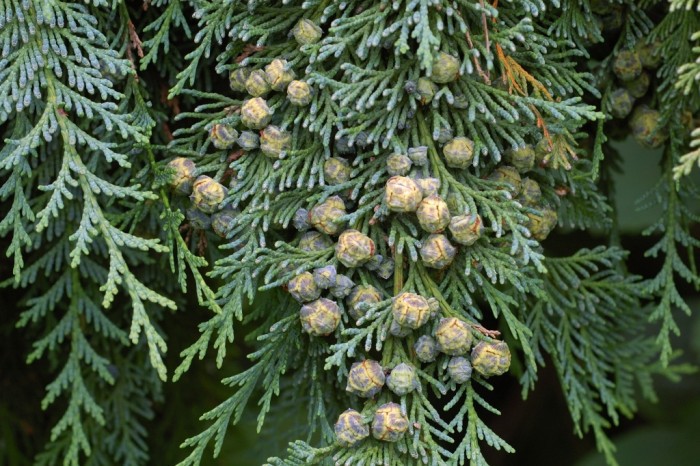Chamaecyparis, commonly called cypress or false-cypress (to distinguish it from related cypresses), is a genus of conifer in the cypress family Cupressaceae, native to eastern Asia and western and eastern North America. The name is derived from the Greek khamai, meaning ground, and kuparissos for cypress.
They are medium-sized to large evergreen trees growing from 65 to 230 feet (20 - 70 m) tall, with foliage in flat sprays. The leaves are of two types, needle-like juvenile leaves on young seedlings up to a year old, and scale-like adult leaves. The cones are globose to oval, with 8 to 14 scales arranged in opposite decussate pairs; each scale bears 2 to 4 small seeds.
There are six living species:
C. taiwanensis is treated by many authors as a variety of C. obtusa (as C. obtusa var. formosana). The genus Fokienia is not always recognized as a separate genus from Chamaecyparis, in which case Chamaecyparis hodginsii = Fokienia hodginsii and is added to the above list. On the other hand, a species which used to be included in this genus, as Chamaecyparis nootkatensis, has now been transferred on the basis of strong genetic and morphological evidence to the separate genus Callitropsis as Callitropsis nootkatensis, or back to Cupressus nootkatensis (the name it was originally described under in 1824).
There are also several species described from the fossil record including:
Four species (C. lawsoniana, C. obtusa, C. pisifera, and C. thyoides) are of considerable importance as ornamental trees in horticulture; several hundred cultivars have been selected for various traits, including dwarf size, yellow, Blue, silvery or variegated foliage, permanent retention of juvenile leaves, and thread-like shoots with reduced branching. In some areas, cultivation is limited by Phytophthora root rot diseases, with C. lawsoniana being particularly susceptible to P. lateralis.
The wood is scented, and is highly valued, particularly in Japan, where it is used for temple construction.
